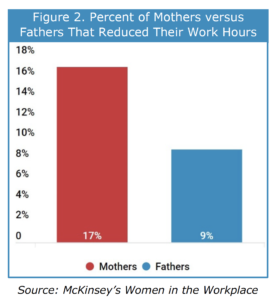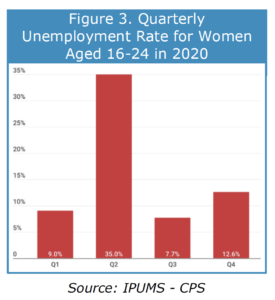About the Authors
Chris Brown is the Director of Policy and Research with the Common Sense Institute where he leads the research efforts of CSI to provide insightful, accurate and actionable information on the implications of public policy issues throughout the state of Colorado.
Abigail Giannou is a Research Analyst at the Common Sense Institute. She is presently in her senior year at University of Colorado Denver where she is majoring in International Business and minoring in Economics.
Nicole Riehl has served as the President and CEO of Executives Partnering to Invest in Children (EPIC) since September of 2019. Her experience spans across the private and non-profit sectors, with her career beginning as an early childhood teacher at Storagetek’s on-site child care program.
About Common Sense Institute
Common Sense Institute is a non-partisan research organization dedicated to the protection and promotion of Colorado’s economy. CSI is at the forefront of important discussions concerning the future of free enterprise in Colorado and aims to have an impact on the issues that matter most to Coloradans. CSI’s mission is to examine the fiscal impacts of policies, initiatives, and proposed laws so that Coloradans are educated and informed on issues impacting their lives.
About Executives Partnering to Invest in Children
Executives Partnering to Invest in Children (EPIC) is a group of prestigious business executives partnering to serve as the business community’s non-partisan voice for early childhood. As leaders in their companies and industries, EPIC Members are leaving a legacy of true impact and lasting change by leading efforts to build infrastructure and advance policies that support the workforce of today while developing the workforce of tomorrow. Their network of business leaders is committed to a future where child care and workforce preparedness are not roadblocks to business success and economic growth. Together, they are initiating change and shaping the future of Colorado through action-oriented conversations with business associations, government leaders, and other organizations to raise awareness and increase business engagement in early childhood.
The She-Cession
In the early months of the pandemic, the “She-Cession” was coined as the evidence mounted that women were facing disproportionate, negative impacts through the unfolding economic upheaval. While the economy partially recovered from the worst of the downturn, the devastating impacts to women in the workforce continued. In the U.S., over 2.1 million women left the labor market entirely since the beginning of the pandemic and are not yet looking to return to work.[i]

Since July of 2020, Common Sense Institute (CSI) has issued recurring reports detailing the different ways the Colorado economy and labor force were impacted throughout the course of 2020. While both men and women faced historic impacts, a consistent CSI finding is that working women faced greater challenges and larger negative impacts.
The burdensome cost of child care, the transition to remote learning, and the mass job losses in various industries most affected by COVID-19, impeded women’s abilities to compete in the Colorado economy.
If policymakers fail to recognize the current barriers of re-entry and provide solutions for working women, generations of progress could be reversed.
Nationally, women accounted for 54.5% of all the jobs lost in 2020, yet women make up just 47% of the labor force.
In December of 2020 there were 9.65 million fewer jobs in the U.S. than in January. Of the total job loss, women accounted for 54.5%, or 5.26 million of those jobs, and men accounted for 4.4 million, 860,000 fewer jobs than women.[iii]
In December, women accounted for 100% of the net job loss for the month, as women lost 140,000 jobs, whereas men gained 16,000 jobs.[iv]
Some of the disproportionate impacts are even more striking when evaluating the impacts on an industry basis. While women make up just 48% of jobs in the retail industry, they accounted for 89% of the total jobs lost in that sector in 2020.
While this level of detail is not available in the Colorado survey data, it reflects a striking trend.
Mothers Left the Economy at Significantly High Rates in 2020.
 The labor force participation rate for women (LFPR) dropped from 63% in February, to 54% in May, the lowest point in 2020, indicating 175,000 fewer women in the labor force.
The labor force participation rate for women (LFPR) dropped from 63% in February, to 54% in May, the lowest point in 2020, indicating 175,000 fewer women in the labor force.
While the overall female participation rate recovered through the end of the year, the December LFPR for Colorado mothers remained 6% below the February 2020 level of 79%. This indicated, in total, a little over 20,000 Colorado mothers left the labor force and have not yet re-entered.
As shown in Figure 1, the difference in the LFPR between mothers and everyone else doubled, from a difference of 6.2 percentage points to 12.3 percentage points.
Mothers Were Nearly Twice as Likely to Have Reduced Work Hours Relative to Fathers.
Even if women did not leave the workforce, they faced disproportionate reductions in pay and working hours. According to McKinsey’s Women in the Workplace Report from 2020, nearly 17% of mothers reduced their work hours compared to 9% of fathers. The same report found 8% of mothers moved from full-time to part-time hours during the pandemic.
Young Women Had Much Higher Unemployment Rates in 2020.
 While the Colorado labor force participation rate for older women (particularly mothers) dropped significantly, younger women remained in the labor force. However, younger women had incredibly high unemployment rates (UE) in 2020, due to the large reduction in available employment opportunities.
While the Colorado labor force participation rate for older women (particularly mothers) dropped significantly, younger women remained in the labor force. However, younger women had incredibly high unemployment rates (UE) in 2020, due to the large reduction in available employment opportunities.
The unemployment rate for women between the ages of 16 and 24 jumped to just over 12.5% in the fourth quarter while the unemployment rate for women above the age of 25, was at 5%.
Unemployment Rates for Women with Less Education Were 4X Higher Than for Those with an Associate Degree or Higher.
Another way to understand the types of industries and occupations that were more severely impacted by COVID-19 is to look at the impacts across educational attainment levels.
While both men and women with lower levels of education faced higher unemployment rates, the changes over the course of 2020 were quite staggering for women in particular. The unemployment rate in the first quarter of 2020 started at 4.5% for women with an associate degree and higher, the fourth quarter rate declined to 3%. At the same time the UE rate for women with some college or less, increased from 9% to 12.9% from the first to fourth quarter.
The Great Recessions challenges were unique to the younger workforce, a similar trend is noted today. Most of the women between ages 16-29, just entering the labor force or are early into their careers. These setbacks will take years to recover from.
Several Factors Have Contributed to Women Leaving the Workforce.
As schools closed or curtailed in early 2020, mothers took on more household work, according to a 2020 McKinsey report, “Mothers are 1.5 times more likely than fathers to be spending an extra three or more hours a day on housework and child care—equivalent to 20 hours a week, or half a full-time job.” Having to adapt to a remote, hybrid, or in-person learning schedule placed mothers at a significant disadvantage. Many mothers found continuing to work unattainable. For mothers of young children, the financial cost of early child care may no longer be feasible with reduced hours, the loss of an income in the household, and child care program closures.
Compared to other states, Colorado ranks eighth for the highest cost of early child care.[v] The loss of household income through 2020 only further exposed the problems with early child care costs for many parents. The annual average cost of $15,325 for full-time infant care accounts for roughly 21% of a median family’s $73,000 income in Colorado, and 61% of a minimum wage worker’s income. When nearly half of families reported a household income loss[vi] and statewide child care programs reported a 50% reduction in enrollment[vii] in the summer of 2020, the urgency of this challenge for Colorado families became clear.
What Current Actions Are the Federal and State Government Taking?
Challenges impacting parents and particularly working mothers is quickly becoming a leading topic of discussion both at the Colorado and U.S. Capitol.
President Biden mentioned a temporary increase to the maximum tax credit for parents, an effort to target low-income families in just the short-term. Senator Mitt Romney recently proposed the Family Security Act (FSA), a comprehensive change to supporting parents, by swapping out child tax credits for direct recurring monthly payments.[viii]
The Colorado Child Care Assistance Program (CCCAP) is a program which provides direct financial assistance towards childcare for qualifying families. It is funded with federal dollars and works in connection with Colorado Works, the State’s version of Temporary Assistance for Needy Families (TANF).
Statewide access to affordable, quality child care is a key component of our state’s infrastructure. It is needed to ensure families can find and participate in paid work, while children receive the care and early learning experiences that set them up for a successful future.
The Road to Recovery: Discussing Next Steps
The Road to Recovery[ix] is an ongoing collaborative effort between the Colorado Business Roundtable and Common Sense Institute that highlights needed changes to ensure long-term economic growth for Colorado.
This call to action by Colorado business leaders aims to provoke policy change. Recommendations related to child care are featured in the Road to Recovery, because it is key to building a balanced and thriving economy that meets the needs of Coloradans.
The child care business model is stressed and ripe for innovation, and the cost structure makes it difficult to build and sustain a child care program.


Resources
[i] https://www.bls.gov/bls/newsrels.htm#latest-releases
[ii] https://www.denverpost.com/2020/07/27/covid19-colorado-women-unemployment-labor-participation/
[iii] Author calculations from https://www.bls.gov
[iv] https://www.bls.gov/bls/newsrels.htm#latest-releases
[v] https://www.epi.org/child-care-costs-in-the-united-states/#/CO
[vi] https://earlymilestones.org/wp-content/uploads/2021/01/COVID-EC-Research-Family-Brief.pdf
[vii] https://earlymilestones.org/wp-content/uploads/2020/09/Provider-Brief_dec2020.pdf
[viii] https://www.romney.senate.gov/romney-offers-path-provide-greater-financial-security-american-families
[ix] https://www.roadtorecoverycolorado.org/

